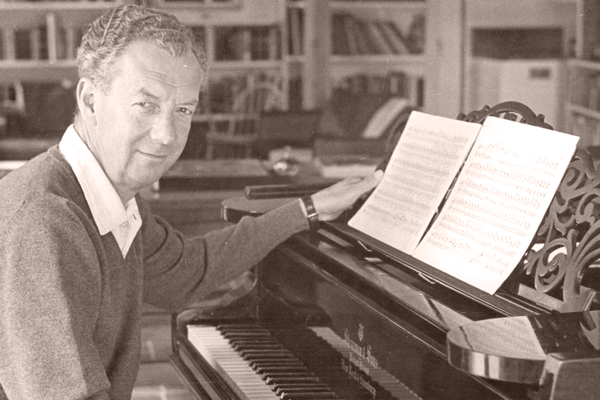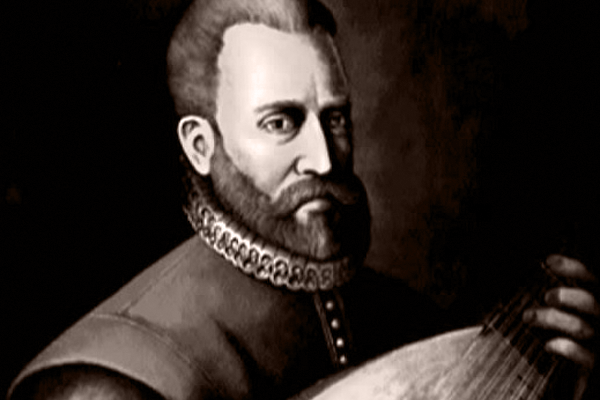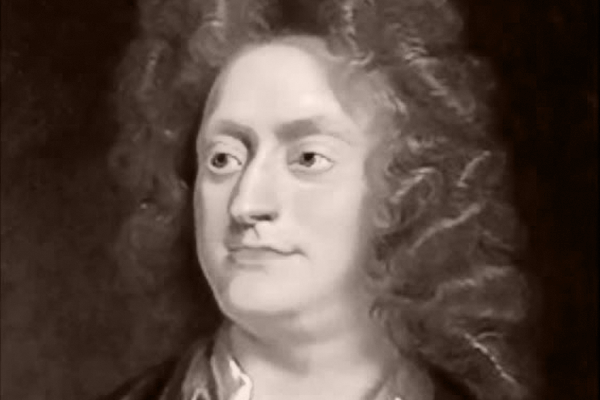Please review our Health & Safety policies before arriving at the concert venue. By purchasing tickets or ticket packages, you agree that you and any guests who use your tickets will comply with these policies.
Some of Benjamin Britten's greatest chamber works are juxtaposed against music by the Renaissance and Baroque composers who inspired him.
Benjamin Britten: Fanfare for St. Edmundsbury
Travis Peterson, Jeff Luke, Peter Margulies trumpet
John Dowland: The Bookes of Songes or Ayres (excerpts)
Julia Gershkoff soprano | Cameron Welke lute
Benjamin Britten: Lachrymae
John T Posadas viola | Jason Hardink piano
Henry Purcell: Fantasia Upon One Note
Robert Waters, Rebecca McFaul violin
Bradley Ottesen, John T Posadas viola
Anne Francis Bayless cello
Benjamin Britten: String Quartet No. 2 in C major, op. 36
Fry Street Quartet
Robert Waters, Rebecca McFaul violin
Bradley Ottesen viola | Anne Francis Bayless cello
Program Notes
by Chris Myers
“I couldn’t be alone. I couldn’t work alone. I can only work really because of the tradition that I am conscious of behind me… I feel as close to Dowland as I do to my youngest contemporary.”
- Benjamin Britten
Few composers have been as conscious of their musical heritage as Benjamin Britten. Confronting the challenge of creating a distinctly English music, Britten looked, not to the continental classical tradition, but to his own country’s musical past.
In John Dowland, Britten found a kindred spirit who shared his love for the beauty of the English language and a rare gift for illuminating poetry with music. And in Henry Purcell, he discovered both a shared affinity for the theater and a sense of musical structure and style ideally matched to his own.
Today, we explore five pieces that showcase the intimate connection between Benjamin Britten and the musical predecessors who mapped out a path to guide him centuries before he was born.
In 1959, Britten composed a fanfare for the Bury St Edmunds Pageant of Magna Carta. Each of the parts in the Fanfare for St. Edmundsbury can be played on a natural trumpet (the valveless instrument that was used prior to the 19th century). However, in a twist on this nod to musical heritage, each part is written for a trumpet in a different key. Each musician performs a solo verse of contrasting character — legato arpeggios, a lilting dance, a heraldic proclamation — before joining together to play their lines simultaneously, each in its own key. This apparent chaos evolves into a grand finale of triumphant chords as the competing keys find common points of harmony.
The poet Richard Barnfield said that John Dowland’s “heavenly touch upon the lute doth ravish human sense.” Sadly, we’ll never hear Dowland perform, but we can get a sense of his expressiveness in the three collections of songs he published. The Bookes of Songes or Ayres contain 64 musical settings of Elizabethan verse demonstrating Dowland’s sensitivity to the poetic word.
Britten borrowed two of these songs as the basis of Lachrymae. In a departure from typical variation form, these “Reflections on a song of Dowland” begin, not with the theme, but by plunging directly into variations that deconstruct the original song, each examining an isolated fragment or element, hints of a tune glimpsed through a musical fog. A recognizable melody does emerge in the sixth variation, but rather than the source of these fragments, it turns out to be a cameo appearance of “Flow my tears.” Only at the end does a full statement of “If my complaints could passions move” emerge in a moment of emotional catharsis.
The fantasy is a musical form consisting of a series of musical phrases, each of which is explored contrapuntally before the next begins. It was already considered old-fashioned by Purcell’s time. So we can only guess why, in 1680, he suddenly composed 15 of them — the only music he ever wrote in this genre. In the Fantasia Upon One Note, the tenor viol (now usually performed on a viola) sustains a single note — middle C — throughout the piece as the other four instruments weave exquisite lines around it.
Britten chose this fantasia as a companion piece for the premiere recording of his String Quartet No. 2, written to commemorate the 250th anniversary of Purcell’s death. So it doesn’t seem much of a stretch to hear an homage in C major drone that supports the opening of the quartet’s first movement. This movement is a uniquely Britten-esque take on sonata form. The exposition introduces three themes, rather than the traditional two. All three are solidly grounded in the key of C, making the development’s murky tonality that much more unsettling. Tonal stability returns in the recapitulation as the opening themes return, not sequentially, but simultaneously. A scherzo and trio movement follows, brimming with restless energy.
It’s in the final movement that the tribute to Purcell becomes most explicit. Britten had long been fascinated by variation forms such as the chaconne and passacaglia, in which a series of musical variations evolve over a repeated bass line (the “ground bass”). These were common in the 17th century, and Purcell was a particularly frequent user. So it’s unsurprising to find a “chacony” (the spelling itself is a tribute to Purcell) at the heart of this quartet.
Over the years, Britten employed many ingenious solutions to avoid the potential monotony inherent to a repeated bass line. Here, his theme modulates from B-flat to C, giving a sense of direction to what can be a harmonically static form in less skilled hands. 21 variations unfold, with solo cadenzas breaking them up into four distinct groups. “The sections may be said to review the theme from (a) harmonic, (b) rhythmic, (c) melodic, and (d) formal aspects,” Britten explained in his program notes for the first performance. In its final variation, the chaconne calls back to the opening drone of the first movement, as no fewer than 23 explosive C major chords drag the bass line back into full conformity with the home key of the piece.
Copyright © 2022 Chris Myers. All rights reserved. Unauthorized distribution or reproduction prohibited. www.argylearts.com.









